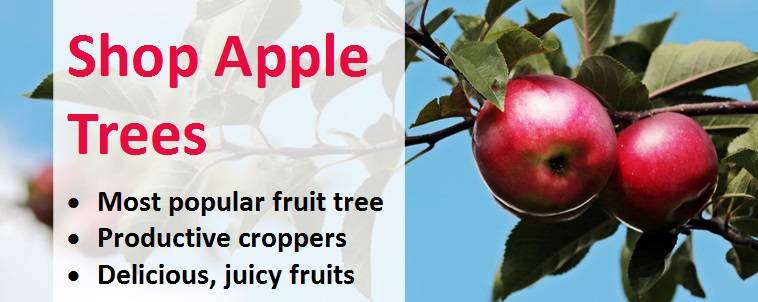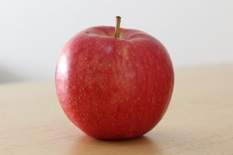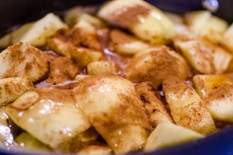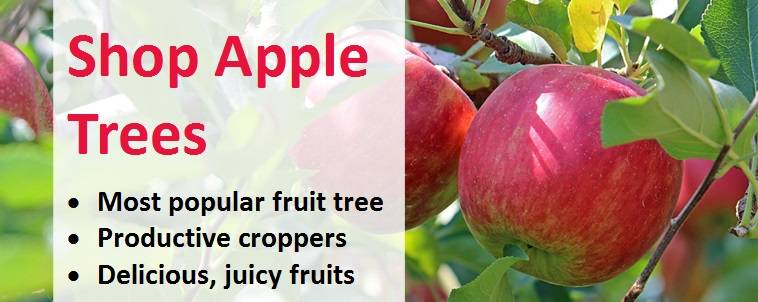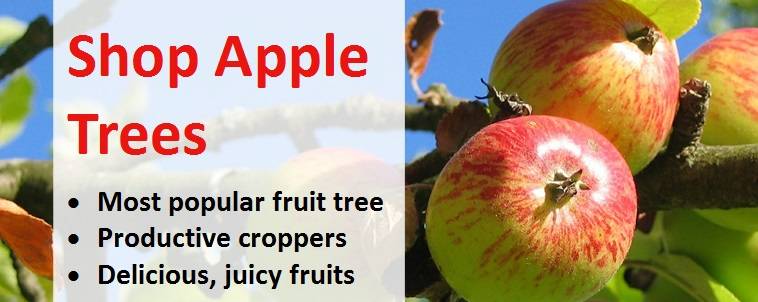How to Grow Your Own Apple Tree
Apples are the most popular type of fruit tree for good reason - they are easy to grow, productive and there are varieties and growth forms suitable for every garden. There is nothing like eating fresh fruit straight from the tree in autumn; far better than anything available from the supermarket shelves. Different varieties produce their fruit at different times of the year and late ripening varieties store well, so you can have a plentiful stock that can be enjoyed throughout the winter. Apples grow on rootstocks which determine the ultimate size of the tree and are a key factor in getting a successful crop. They originated in Central Asia, where their wild ancestor, Malus sieversii, is still found today. There are more than 7,500 known cultivars of apples, resulting in a range of desired characteristics.
Choosing an Apple Variety
Different cultivars are bred for various tastes and uses, broadly falling into 2 categories: dessert apples for eating and cooking apples for cooking. Some are dual-purpose, so suitable for both uses.
|
Dessert apples |
Cooking apples |
The best apple tree varieties are listed below:
- Apple Katy - small to medium-sized, deep scarlet-coloured apples with a juicy, refreshing flavour. Cropping in early autumn, the fruit is suitable for eating, baking and also cider production. Disease resistant, reliable cropper. Pollination group B.
- Apple Discovery - early fruiting, bright crimson, juicy dessert apples in autumn, best eaten fresh or used for juicing. Grown on a compact rootstock, so ideal for the smaller garden. Pollination group B.
- Apple Spartan - small, dark red eating apple with crisp white flesh. Disease resistant, easy to grow & stores well. Plentiful fruits are best thinned out before the October harvest. Self-fertile.
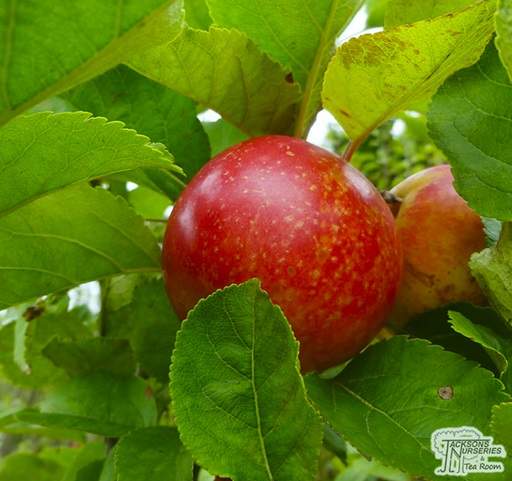
- Apple Grenadier - early season, medium-large, yellow-green cooking apple. Hardy and easy to grow, cropping in mid-August and best eaten fresh. Self-fertile but benefits from a pollinator.
- Apple Jupiter - green-yellow dessert apple becoming red-flushed as it ripens. Sweet, Cox-like flavour but with heavier crops, albeit irregular shaped and heavily russetted. Triploid; requires 2 other trees. Pollination group BT.
- Apple Egremont - small, pale green-yellow, well-flavoured dessert apples with a subtle red flush. Frost tolerant apples with rough skins and a sweet flavour. Partially self-fertile, but benefits from a nearby pollinator. Pollination group A.
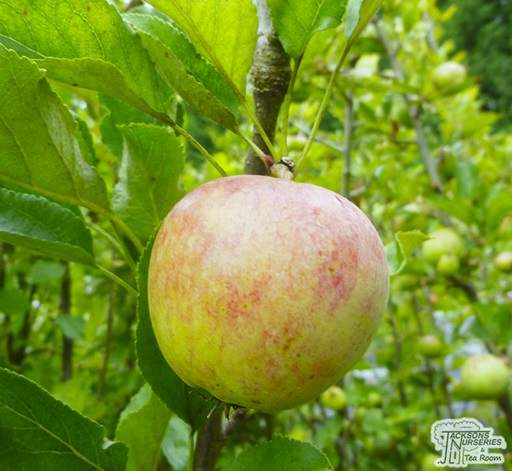
- Apple Bramley Seedling - abundant, firm pale yellow-green cooking or juicing apples. Makes excellent crumbles, chutneys, pies and ciders. Triploid; requires 2 other trees. Pollination group BT.
- Apple Cox's Orange Pippin - classic, popular dessert apple prominently flushed orange-red with a superb, aromatic, crisp flavour. Primarily an eating apple, also great for making juice, cider, chutneys or mincemeat. Ready for picking in October. Pollination group B.
- Apple James Grieve - heavy and regular crops of medium-large, yellow, speckled orange apples with a juicy, tangy taste that keeps their shape well when cooked. Best in a sunny spot, cropping in September to October. Pollination group B.
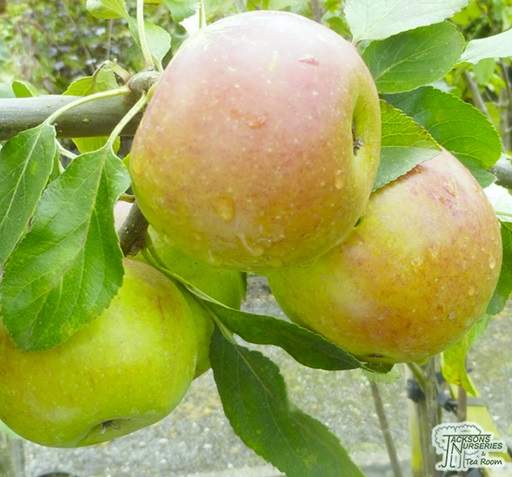
- Apple Charles Ross - dual-purpose apple with tender flesh and juicy, sweet flavour, best used as soon as it's picked. Excellent for using in tarts as the slices keep their shape well. Tolerant of shallow, chalky soils. Partially self-fertile but benefits from a nearby pollinator. Pollination group B.
- Apple Golden Delicious - popular, dual-purpose firm golden-yellow apple with white flesh that retains its shape when baked or cooked. Its sweet, crisp, rich mellow flavour makes it an asset to any recipe or fruit bowl. Pollination group C.
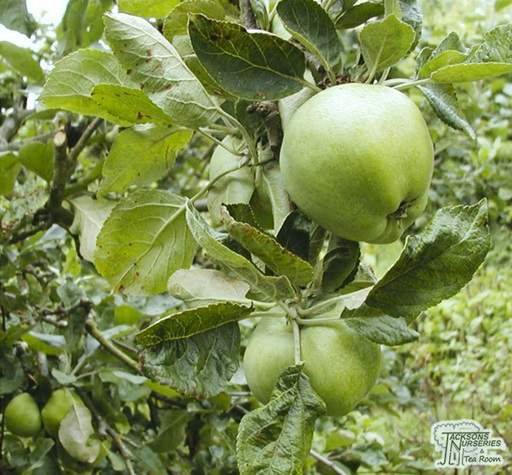
Bear in mind the requirement for a compatible pollinator - see Pollination Groups below.
Types of Rootstock
Apple trees are not grown on their own roots. The top of the tree (the part that produces the apples) is grafted onto different roots (called a rootstock), and the roots control the size of the tree. The 4 main types of rootstock are:
- M27 - smallest trees, fruiting early and suitable for vigorous cultivars. Need staking throughout life
- M9 - dwarf bushes, spindle bushes and cordons. Come into bearing early and need stakes
- M26 - produces a larger tree, coming into bearing a year or two later
- MM106 - produces a semi-dwarfing tree used for bush, spindle bushes, cordons, espaliers and fans
We indicate the 'Eventual Height' of all fruit trees we sell on our individual plant pages, so whilst it's useful to be aware of the different types of rootstock, you don't need to remember the sizes that they each grow to because these are clearly indicated for you when choosing a tree.

Pollination Groups
Self-fertile trees will produce fruit without the need for another tree to pollinate them. If your tree if not self-fertile, it will need to be paired with another one from the same pollination group. Apples are grouped into pollination groups according to when they flower. Choose at least 2 different cultivars in the same or adjacent pollination groups and plant within 20m of each other. Certain cultivars known as 'triploids' (such as 'Bramley's Seedling') need a third cultivar nearby, as their pollen is ineffective at pollinating other trees.
Alternatively, consider growing a 'family tree' which has 2 or 3 cultivars grafted onto the same tree. These solve the problem of cross-pollination, but can be harder to prune, as the different cultivars often grow at different rates. Some of the family trees we offer are:
1) Apple Tree Katy/Spartan/Russet
2) Apple Tree Katy/Cox/Spartan
3) Apple Tree Katy/Bramley/Cox
4) Apple Tree Cox/Bramley/James Grieve
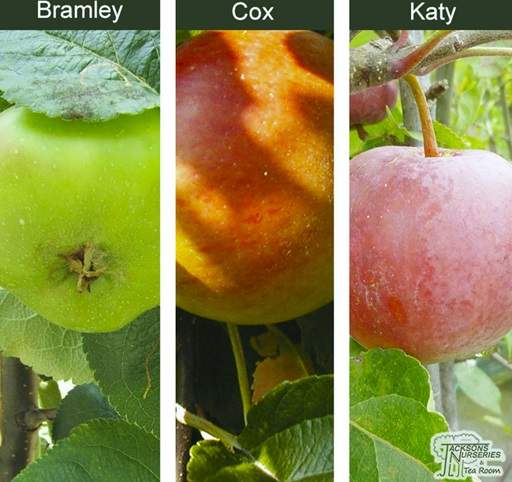
Family apple tree Bramley, Cox and Katy
All of the above have 3 different types of apple grafted onto the same deciduous tree, so you can enjoy 3 varieties at the same time and don't have to worry about pollination groups.
Planting Advice
Container grown trees can be planted at any time of year providing there is not a frost and the ground is not waterlogged, although autumn planting is preferable, as they need less watering than ones planted in spring or summer. Bare root trees can be planted from late autumn to the end of winter as this is when the tree is in its dormant stage. If the ground is frozen, or you can't plant for some other reason, 'heel' in your apple tree in a shallow trench, angling the trunk and covering the roots at the bottom of the trunk with moist soil.

Choose a sunny, sheltered position well away from any frost pockets and avoid poorly drained or shallow soils. We recommend growing your fruit tree(s) along a south-facing wall or fence. The wall will soak up the heat of the sun, allowing for a longer ripening time. When you're ready to plant, give the roots of the tree a good soaking before planting. Be careful to ensure the depth of the planting hole is adequate to accommodate all of the root system - it should be the same depth and one-third wider than the root ball. Once you've finished digging, break up the bottom of the planting hole with a fork and build in plenty of well-rotted organic matter such as manure, leaf mould or well-rotted garden compost. At this stage, recheck the depth of the planting hole using a cane or rod; it is vital to match the depth of planting to the depth at which the tree has been grown on our nursery.
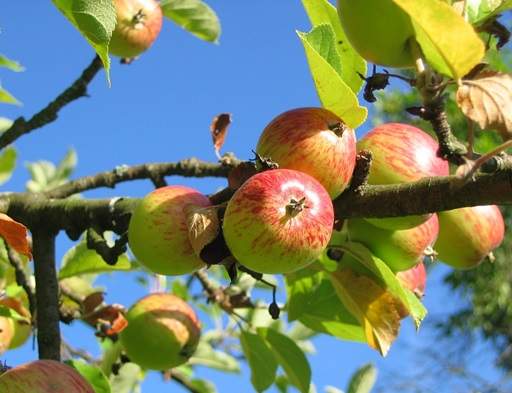
Plant your apple tree against a sunny, south-facing wall or fence, if possible
Next, carefully place the root ball of your new fruit tree into the hole, apply a general purpose fertiliser to the soil you've just dug out, then backfill into the planting hole again and firm with your boot. If you are planting a bare root fruit tree, as the topsoil is backfilled, shake the tree up and down to allow the soil to filter around the roots. Once you've finished backfilling, ensure that the tree remains upright and the graft union (the point where the fruit variety is grafted onto the rootstock) is not buried. Drive a sturdy stake into a point on the windward side of the hole that will match up well with the tree once planted. Attach the tree to the stake using a tree tie, remembering to use a buffer to prevent chaffing.
Finally, tidy the planting hole and water thoroughly. Apply a thick mulch of organic matter, taking care not to allow it to accumulate around the crown of the tree. The ground mulch applied at planting time should be repeated annually - this should help to retain moisture and smother weeds so there is no competition in the vital root active areas.
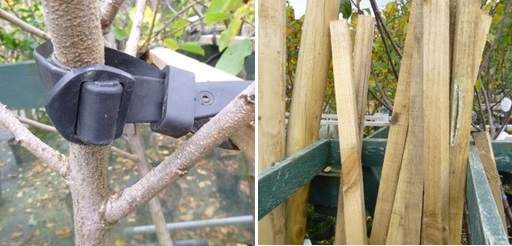
Our Planting Kit with stake, tree tie and Osmocote tablets is perfect to give your new fruit tree the best start
If container growing your fruit tree, use a soil-based potting compost (John Innes No 3 is ideal) to half-fill your pot or tub, then place your tree on top. Finish by filling in the pot/tub with more compost to the base of your tree, ensuring you do not cover the crown, and water thoroughly.
Pruning
Apple trees should be pruned every year to encourage new growth on which new buds will form and ensure a good harvest the following season. Trees that are not pruned become less productive and congested with old branches and diseased shoots. Pruning is easy, even for the novice gardener - use a pair of bypass secateurs to create an open goblet shape with a framework of about 5 main branches. Thought is needed in setting out the basic framework of the tree and reducing shoots by about one-third to a bud in an outward pointing direction. Prune apple trees in late autumn and winter, supplementing with light pruning in summer if absolutely necessary in smaller gardens. Cordons and other forms of intensive fruit trees should be pruned during the summer months from the third week in July or in areas with heavy rainfall, further north or in wet summers from the second week in August.
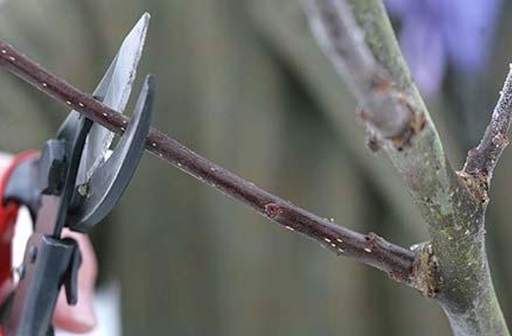
Prune your apple tree using a pair of bypass secateurs
Pests & Diseases
Choosing an apple tree with a degree of disease resistance is the important first step, particularly if you wish to grow fruit organically or if you live in a part of the country where climate favours certain diseases. All of the varieties we stock are suitable. To further defend your tree from moths and caterpillars, apply a grease band 45cm (18 inches) above soil level to the trunk of your tree and tree stake in late autumn. This will protect your fruit from moths that may otherwise destroy your fruit and leaves. The grease band is basically a glue or sticky paper that prevents wingless female moths from reaching the branches of the tree to mate, thereby preventing caterpillars which would eat the leaves and fruit of your precious fruit tree. If you have the time, we also recommend using an oil-based winter wash in December or January to kill off any over-wintering pests.
Share this page:

